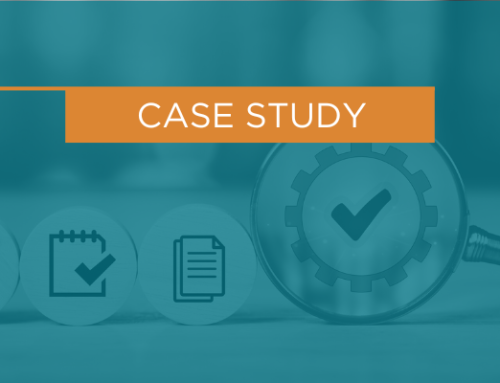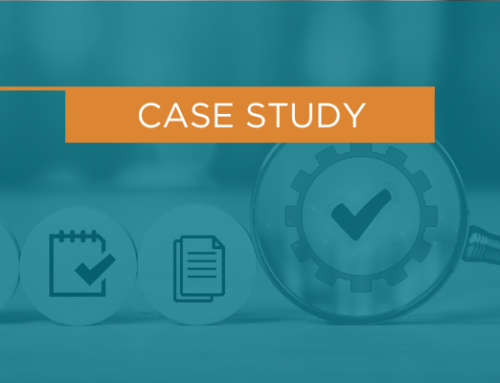By Bradford Jones, CPA, CVA, CMA, CFF
Innovative solutions within finance and accounting departments are creating waves for traditional paradigms and enabling CFOs to harness artificial intelligence and data analytics to elevate strategic decision-making and drive growth.
Explore how boosting financial efficiency can transform the role of your finance department from transactional to strategic.
Finance & Accounting Departments Igniting Strategic Change
Once seen as highly transactional, finance and accounting departments are now expected to identify opportunities for growth and power strategic solutions to ensure businesses drive and sustain profitability.
Finance leaders can safeguard an organization’s financial health by modernizing core accounting processes and optimizing business outcomes. But this only happens when leaders take action to outmaneuver uncertainty by harnessing real-time insights about what’s coming tomorrow, next week, and next month.
Today’s finance and accounting (F&A) departments, however, struggle to flip the switch and shift from transactional grunt work to generating strategic outcomes. In fact, a recent study shows that F&A departments spend 85% of their time preparing financial data and just 15% of their time generating insights.
Imagine what would happen for your business if you could flip those percentages. It’s possible with finance and accounting outsourcing (FAO).
By outsourcing the F&A function to a CPA firm with experience in your industry, you’ll be on your way to flipping that switch and:
- Deploying the digital transformation initiatives you’ve been thinking about
- Leveraging industry best practices that drive efficiency and yield greater insights
- Freeing up employee time to focus on more valuable work
- Predicting and forecasting with greater accuracy
- Making highly informed, strategic, and data-driven decisions
Impact the Customer Experience with FAO
Data and processes that were once managed only in the F&A processes are now tightly connected to procurement, marketing, and sales.
Lines separating the front and back office functions are fading. As this happens, companies around the world are recognizing the importance of the F&A function in improving the customer experience to gain competitive advantages.
As technologies evolve, artificial intelligence, intelligent automation, and data analytics capabilities grow exponentially more sophisticated and valuable. Companies must make bold moves and keep up with the pace of today’s digital marketplace to stay front and center in the minds of customers.
By outsourcing the F&A function to a CPA firm with experience in your industry, the finance department can collaborate with and make itself indispensable to other areas of the business. For example:
- Begin mapping trends among behavioral patterns of your customers. Trends and patterns can support the development of analytical models, which can uncover new predictive investment opportunities and scenarios for sales and marketing.
- Enable dynamic scenario planning. When the CFO has more time to focus on strategic initiatives rather than transactional tasks, the finance department can partner with other departments to evaluate various data-driven customer scenarios and proactively prepare for a range of potential outcomes.
Guide the Journey to Operations Maturity
The best people on your F&A team are invaluable and their time is best spent focused on driving actual business outcomes. The same can be said about every department and team throughout your organization.
Finance leaders can take important first steps to help teams company-wide focus on driving business outcomes.
How? By addressing the maturity of their F&A operations and setting an example for other departments across the organization.
Important first steps include:
- Clearly defining a data management strategy that corrals the growing volume of data necessary for sophisticated analyses. Steer the development of data governance by prioritizing data accuracy, quality, and consistency. Develop and share business cases that clearly quantify the return on investment in improved data quality.
- Establishing parameters for where the F&A team should spend their energy. For example, rather than performing a backward-looking analysis of historical data that only reveals information about past performance, leaders could set a standard that 75 percent of financial analysis should focus on predictive information and prescribe future action steps.
- Recognizing when you need help and leveraging available resources. Transformation often requires more resources than you have on hand. Perhaps you need a different way of working, new finance professionals, or ready-made solutions based on industry best practices that can be deployed with little or no customization.
Learn More about FAO
Digital transformation within F&A is inevitable. Companies that embrace digital transformation and proactively equip themselves with the right partners, tools, and strategies will become agile enough to survive today’s highly competitive landscape.
The good news is that companies willing to make a proactive investment can take advantage of systems that were previously available only to large enterprise-level organizations. It’s never been easier for middle market companies to access and afford the high-functioning tools and systems that enable the F&A function to emerge as a leader and invaluable business partner within your organization.
Contact us today and learn more about how doable the process can be.




